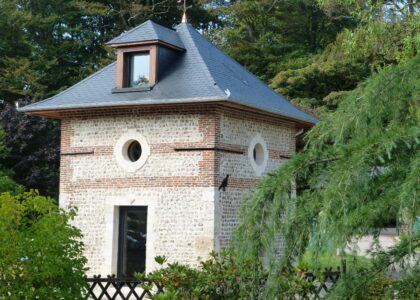Welcome to Aux géologues des Alpes françaises, a location that whispers the tales of ancient Earth, where the science of geology unfolds its mysteries. Though specific information about this location isn’t provided, it serves as an emblematic representation of the geological wonders found in the French Alps.
One of the most intriguing geological phenomena in the region is the Esterellite, a unique variety of quartz-bearing microdiorite. This rock can only be found in the southern part of the Esterel massif between Agay and Saint-Raphaël, France. Its discovery and study shed light on the volcanic activity that shaped the landscape millions of years ago.
The Esterellite, often referred to as the ‘blue porphyry of Estérel,’ was named by the pioneering French geologist Auguste Michel-Levy in 1896. Its fascinating composition includes phenocrysts of quartz, zoned andesine, and hornblende, giving it a distinctive bluish-grey to greenish hue with white plagioclase feldspar and amphibole crystals peppered throughout. This rock is not just a geological curiosity but also a historical artifact; the Romans once used it for paving and decorative purposes.
Over the ages, the Esterel massif has witnessed significant geological events. Its formation dates back to the Hercynian orogeny, with volcanic outcrops appearing around 250 million years ago at the end of the Paleozoic era. This era of intense volcanic activity led to the creation of basalts and red rhyolites, and eventually, the Esterellite laccoliths in the Oligocene epoch.
The study of the Esterellite and its surrounding formations provides insights into the tectonic movements and magmatic processes that have sculpted the European landscape. This rock, with its slightly alkaline andesitic and dacitic composition, offers a glimpse into the subduction zones typical of its time.
Auguste Michel-Levy’s extensive research in 1897 laid the groundwork for understanding the Esterellite’s formation and characteristics. His work, alongside that of other geologists, sparked debates about its age, finally settling on a Tertiary age in the 1970s.
As you explore this region, imagine the slow cooling of magma beneath the Earth’s surface, forming these extraordinary rocks that are now visible due to the erosion of the overlying layers. Each crystal within the Esterellite tells a story of pressure and time, a testament to the dynamic processes that continue to shape our planet.





